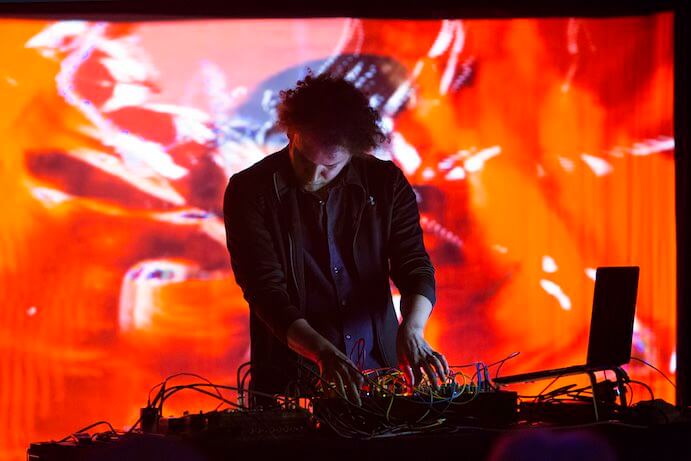Peeling away the plastic wrapping around Brooklyn Rider’s Spontaneous Symbols yields a rush of dopamine and the familiar magic of opening a brand new album. Arresting is the cover artwork: legendary photographer Minor White’s Rochester, June 1959. In White’s own words, “A ‘spontaneous symbol’ is one which develops automatically to fill the need of the moment.” The flaking away of what looks like black paint or charred paper creates a faint re-imagining of a white orchid, or maybe the rising smoke of a blown-out candle–the photograph acting as an inkblot test for the psyche. The scent of fresh ink and matte paper invites an unbridled sniff. Music is meant to be sensory.

Once the album cover is open, spine broken, the linear notes relinquish themselves. Their 11th album since 2008, Brooklyn Rider’s Spontaneous Symbols features music written for the quartet over the past 5 years. Released in October of 2017 with In a Circle Records, the album highlights music by Tyondai Braxton, Evan Ziporyn, Paula Matthusen, Kyle Sanna, and the ensemble’s own Colin Jacobsen.
The opening track is ArpRec 1 (2015) by Tyondai Braxton, a composer of experimental music and co-founder of art rock band Battles. Created using generative techniques, Ableton, and MaxMSP, this work is an incredible display of the ensemble’s unwavering precision, energy, and focus. Broken down into two tracks, ArpRec 1a and ArpRec 1b, the streams of arpeggiations create a sense of constant motion, hurtling sound endlessly forward. Each stroke of Brooklyn Rider’s bows a silky ribbon of sound, effortless. The second track ArpRec 1b is both distinctive and complementary to ArpRec 1a, like split personalities conjoined at the hip. Brooklyn Rider’s rhythmic intensity here is both enduring and virtuosic.

Capturing the experimental scene of downtown New York in the 1970s and 80s, BTT (2015) by Brooklyn Rider’s own Colin Jacobsen gives power to an eclectic mix of juxtapositions. Inspired by the likes of Meredith Monk, John Zorn, the Velvet Underground, this piece demonstrates the ensemble’s uninhibited dexterity and prowess as they wail, sing, scratch, and pluck. Often moving together as a unit, the ensemble weaves together delicate harmonies, grooving pizzicato, and even replicates the sound of dirty record scratches.
Evan Ziporyn’s Qi (2013) relives heightened experiences of the flow of life-force. The first movement “Lucid Flight” induces the sensation of slowly floating in an uneasy dream-state. The upper strings ascending while the cello tethers the ensemble to the ground. The second, “Garden,” is the act of giving way to a tranquil head-space in nature, fit with tremolo bird calls and rolling chords. The final movement, “Transport,” exudes the gratification of reaching out and touching the unknown.
Drawing its name from Gaston Bachelard’s The Poetics of Space, Paula Matthusen’s on attraction for felicitous amplitude (2015) includes material from field recordings of a large Roman cistern likely from the second century. The sound of water dripping from the ceiling fades in, and the texture is almost visceral. Ethereal strings rest gently on top of water droplets. As the harmonies grow and change, the strings delicately imitate the water droplets. It’s with this piece that Brooklyn Rider truly demonstrates the mastery of their art form, conjuring spontaneous symbols out of thin air.

Sequence for Minor White (2012) by Kyle Sanna concludes the album. The opening of this piece is a slow deep breath, the timbre of the cello inspiring respiration. The smooth sound of the strings trades off with the vibration of vocal chords as the ensemble quietly hums. A few minutes in, cascading chaos is injected into the sequence of order as the sound gains momentum. Brooklyn Rider fabricates a wash of different shades of grey static reminiscent of Minor White’s black and white photographs. Sequence for Minor White rests hovering in a liminal space conveying, in the composer’s words, “stasis within the passing of time.”
The beauty of Spontaneous Symbols is not only in its impressive execution but in the way it relinquishes meaning to the senses–each sensory experience acting as an equivalent for our own personal perceptions. The music simply acting as a sonic means to an end.
























